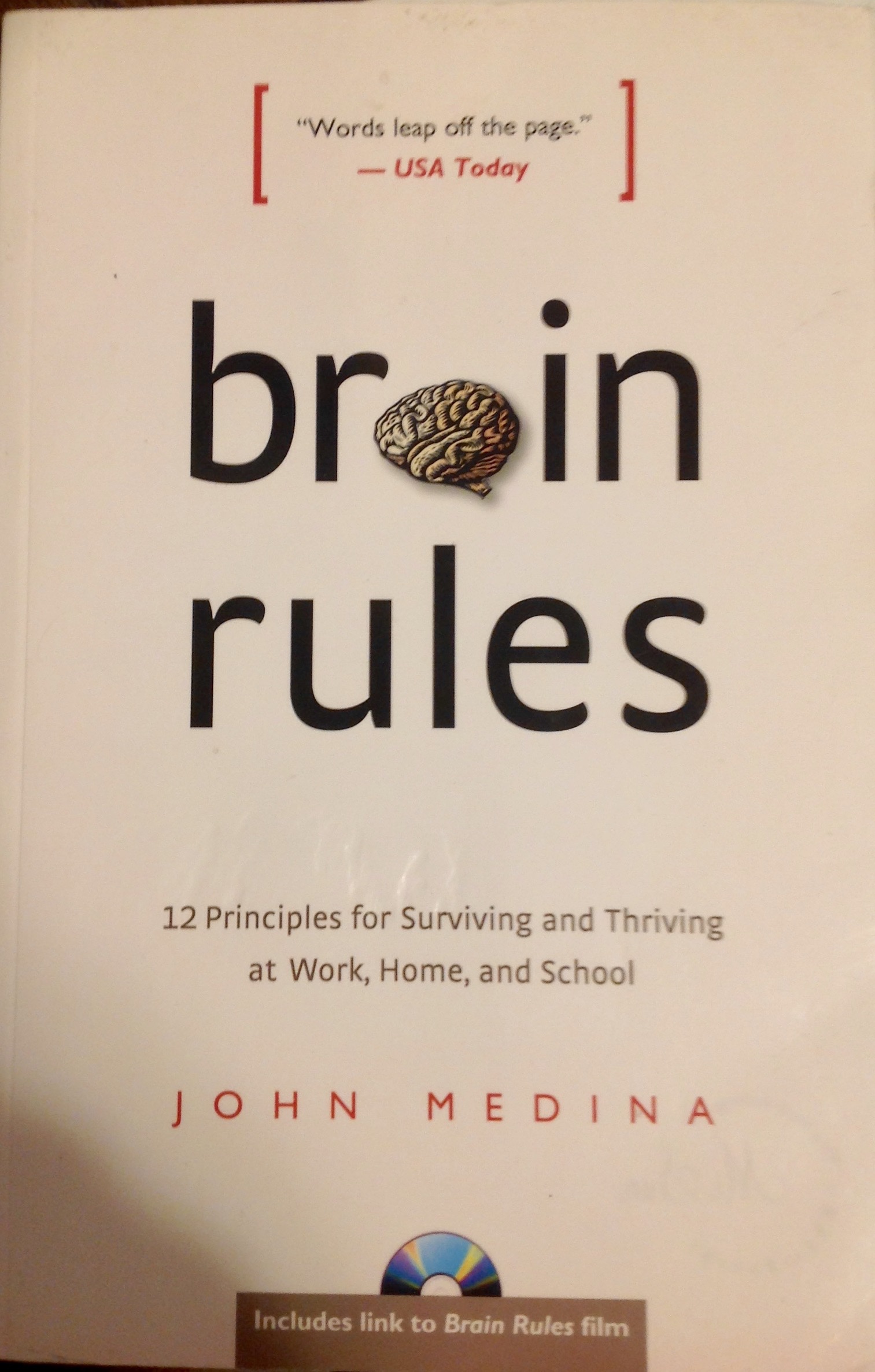
I really wanted to like this book. It was recommended to me by a good friend. He raved about it.
I didn’t like it.
I wanted to. I really did. In fact, I continued reading it even long after I’d lost interest. And that’s the irony. It’s an interesting book. Just not something that I’m interested in.
John Medina, the author is brilliant. He explains how our brains make memories. How we learn new things. Why we forget old things. And his writing style is easy flowing and engaging. But, he’s talking about some heavy topics.
He explains 12 rules that affect our brains and how we learn.
- Exercise boosts brain power
- The human brain evolved, too
- Every brain is wired differently
- We don’t pay attention to boring things
- Repeat to remember
- Remember to repeat
- Sleep well, think well
- Stressed brains don’t learn the same way
- Stimulate more of the senses
- Vision trumps all other senses
- Male and female brains are different
- We are powerful and natural explorers
That’s all well and good, but Medina takes us down into the neural pathways and memory banks. (Okay, maybe I’m letting my computer background influence me. It was hard to grasp some of it.) For example, on page 209 in the section on sensory integration, we get this gem:
All explanations about multisensory learning also deal with a counter-intuitive property lurking at its mechanistic core: Extra information given at the moment of learning makes learning better.
Okay-dokey, then.
I can understand why my friend, a top sales manager for a training company would find it interesting. Medina explains why people learn and how they learn. That’s important for a sales guy.
What I Liked
Medina never spends too long in the techno-speak before he pulls back to give practical examples. He seems to understand that his book is being read by non-scientists, and strives to keep the topics relevant.
Also, there were definite gems buried in the rough. I found many bits and pieces that provided interesting insights into my own learning. But, honestly, it was like trying to satisfy your hunger by eating sesame seeds. Not enough substance to make the effort worth it.
What I Didn’t
I was not the target audience for “brain rules.” The author spends many pages detailing the workings of the brains, how neurons work, how memory works. It was very trying to plow through the pages of text.
It was a desire to complete the book and because I told my friend I would read it that kept me going.
What It Means For You
If you are the target audience, “brain rules,” is a wonderful book. It will explain in great detail how you can not only improve your own memory but understand how individuals and groups learn and use memory.
My Rating
Two out of four stars. But, your milage may vary.
Rodney M Bliss is an author, columnist and IT Consultant. His blog updates every weekday. He lives in Pleasant Grove, UT with his lovely wife, thirteen children and grandchildren.
Follow him on
Twitter (@rodneymbliss)
Facebook (www.facebook.com/rbliss)
LinkedIn (www.LinkedIn.com/in/rbliss)
or email him at rbliss at msn dot com(c) 2019 Rodney M Bliss, all rights reserved